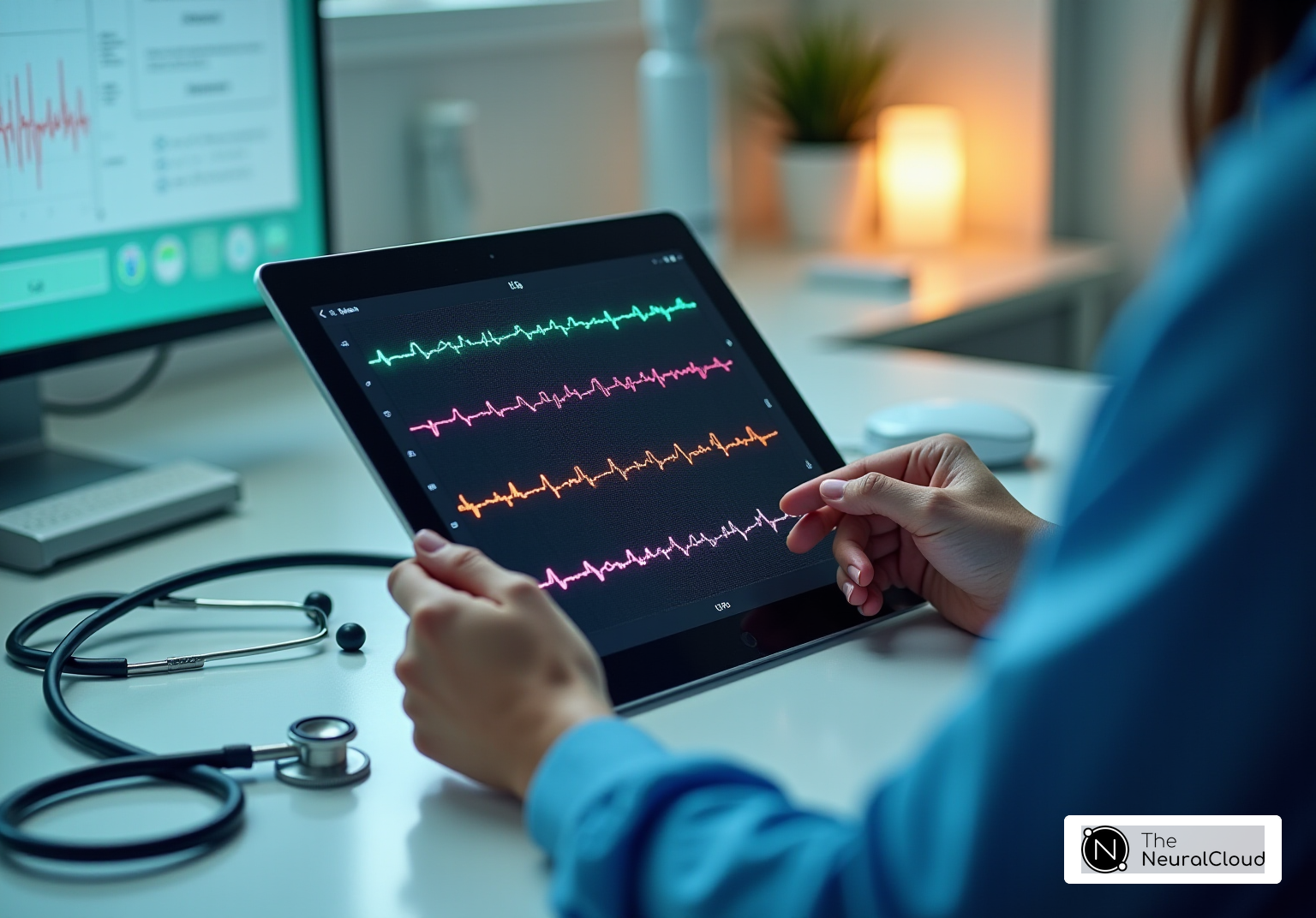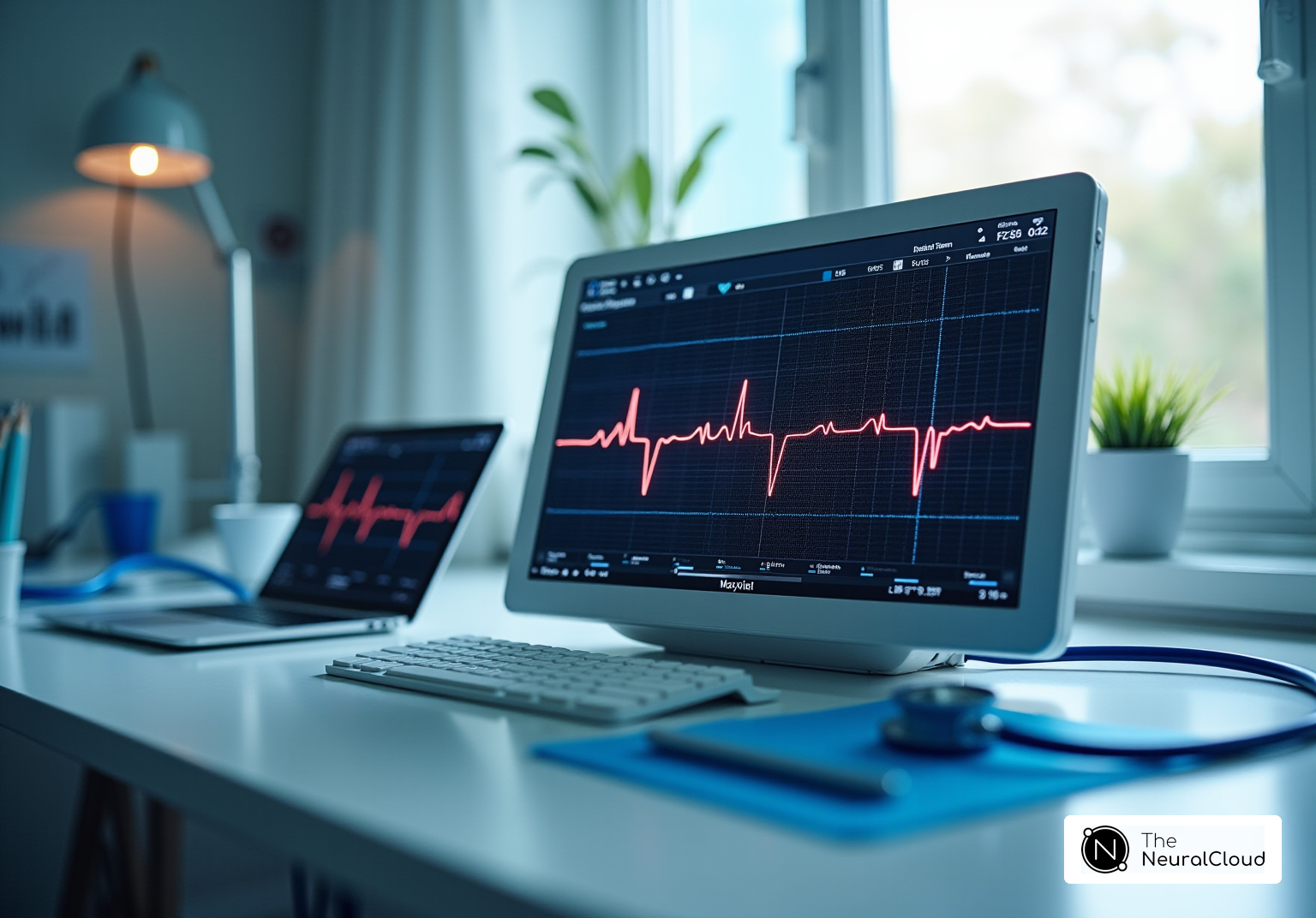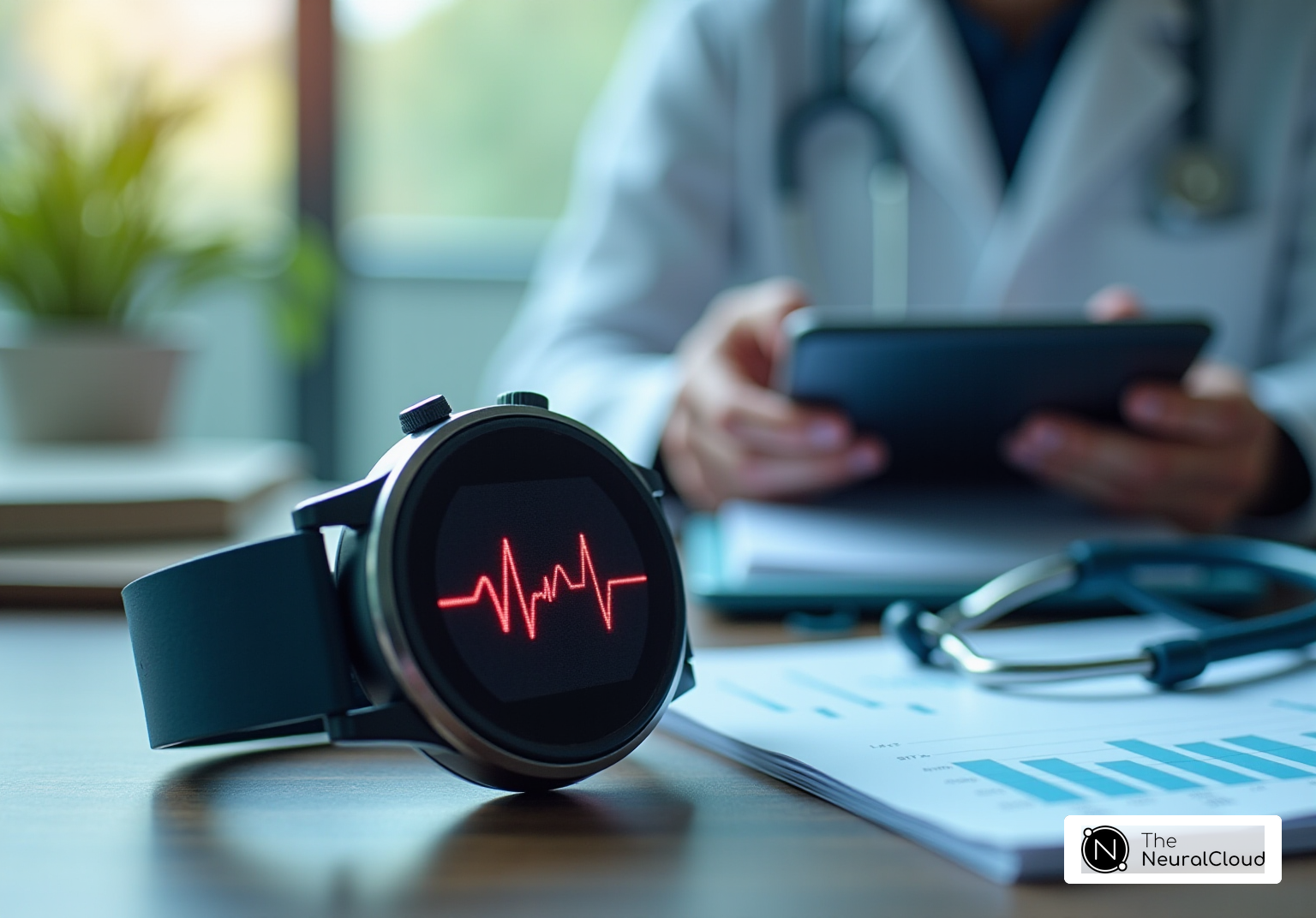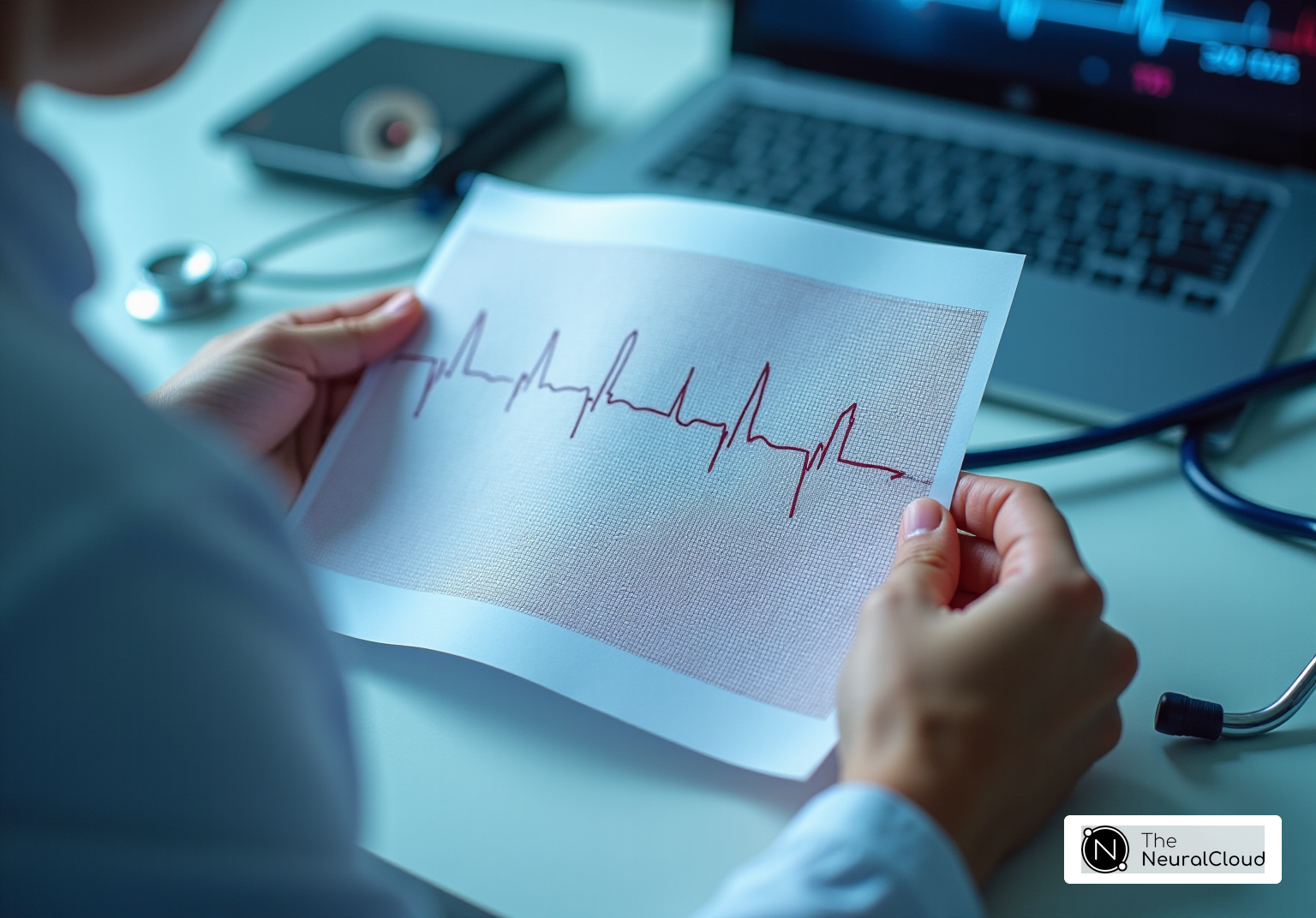Introduction
The evolution of cardiac sensors is transforming healthcare, providing valuable insights into heart health and patient monitoring. These devices, which include non-invasive ECGs and advanced implantable sensors, are more than mere tools; they signify a major advancement in proactive healthcare, allowing for real-time data collection and analysis.
As the demand for these technologies grows, however, challenges related to their integration into existing healthcare systems emerge. Healthcare professionals must consider how to fully leverage the potential of cardiac sensors to improve patient outcomes while addressing the complexities of implementation.
Explore the Basics of Cardiac Sensors
Cardiac monitors play a crucial role in overseeing and examining the heart's electrical activity, capturing vital data such as heart rate, rhythm, and other critical cardiac parameters. These devices fall into two main categories: invasive and non-invasive. Non-invasive devices, like ECG electrodes, attach to the skin to detect electrical signals, while invasive instruments are implanted within the body for continuous monitoring. The importance of non-invasive cardiac devices in healthcare is significant, as they enhance patient safety by minimizing the risks associated with invasive procedures.
The integration of advanced cardiac devices greatly improves data accuracy, which is essential for effective diagnosis and treatment. For example, combining photoplethysmography (PPG) and ECG technologies enables the detection of conditions like atrial fibrillation, boosting the reliability of heart health monitoring. Platforms such as MaxYield™ transform ECG analysis by offering automated, scalable, and device-agnostic solutions that simplify long-form ECG analysis. With features like noise filtering and automated signal processing, MaxYield™ captures ECG recordings from any 1-lead or 3-lead device, ensuring a clean, 'neuralized' signal that enhances diagnostic yield.
As medical systems increasingly focus on preventive measures, the demand for precise heartbeat monitors is on the rise. Forecasts indicate that the Heartbeat Monitor Market will reach $5.18 billion by 2030, growing at a compound annual growth rate of 21.37% from 2024 to 2030.
Experts highlight the transformative potential of these devices in clinical settings. A significant percentage of healthcare professionals are now utilizing cardiac sensors, recognizing their role in facilitating real-time monitoring and early detection of cardiovascular issues. This shift towards non-invasive monitoring, utilizing a cardiac sensor, aligns with the growing trend of remote individual monitoring, which has been shown to reduce hospital readmission rates by up to 76% and improve satisfaction scores. Notably, nearly 50% of Americans support integrating remote monitoring into healthcare, and by 2025, around 71 million Americans are expected to utilize some form of remote monitoring service. Additionally, 65% to 70% of consumers are willing to participate in remote health monitoring programs, underscoring the acceptance and demand for cardiac sensors.
In summary, understanding the fundamentals of cardiac devices, along with advanced solutions like MaxYield™, is essential for healthcare professionals as they integrate these technologies into clinical practice. This ensures precise data collection and enhances patient safety.

Identify Different Types of Cardiac Sensors
There are several types of cardiac sensors, each with unique features and applications:
-
Cardiac sensors, including electrocardiogram (ECG) devices, assess the electrical activity of the heart and are frequently utilized in both clinical and home environments. However, ECG analysis often faces challenges such as high levels of noise and artifacts. The MaxYield™ platform addresses these issues by effectively managing noise, swiftly isolating critical ECG waves even in difficult conditions. This technology salvages previously obscured sections of lengthy Holter, 1-Lead, and patch monitor recordings, significantly enhancing diagnostic yield.
-
Pulse Monitors: Commonly used in fitness and medical settings, these devices monitor pulse rate via optical or electrical sensors. The integration of the MaxYield™ platform can boost their performance by enhancing data precision and minimizing noise interference. This results in more dependable pulse rate readings, which are crucial for accurate health assessments.
-
Cardiac sensor: Implantable cardiac sensors are surgically placed for long-term observation of cardiac rhythms and are especially beneficial for patients with arrhythmias. They provide continuous monitoring, allowing for timely interventions when necessary.
-
The cardiac sensor is essential for monitoring heart health. Wearable sensors, including smartwatches and fitness trackers, feature a cardiac sensor that monitors heart rate and other vital signs, providing real-time information to users and medical providers. The advanced algorithms of the MaxYield™ platform can further enhance the efficiency of these devices by automating data labeling and reducing costs. This ensures that users receive timely and accurate health information.
-
Pressure Devices: These instruments track blood pressure and other hemodynamic parameters, playing a vital role in managing cardiovascular health. Accurate monitoring is essential for effective treatment and prevention strategies.
Understanding these categories enables medical professionals to select the appropriate device based on individual requirements and clinical goals. By leveraging innovative approaches like the MaxYield™ platform, they can effectively tackle challenges in ECG analysis, ultimately improving patient outcomes.
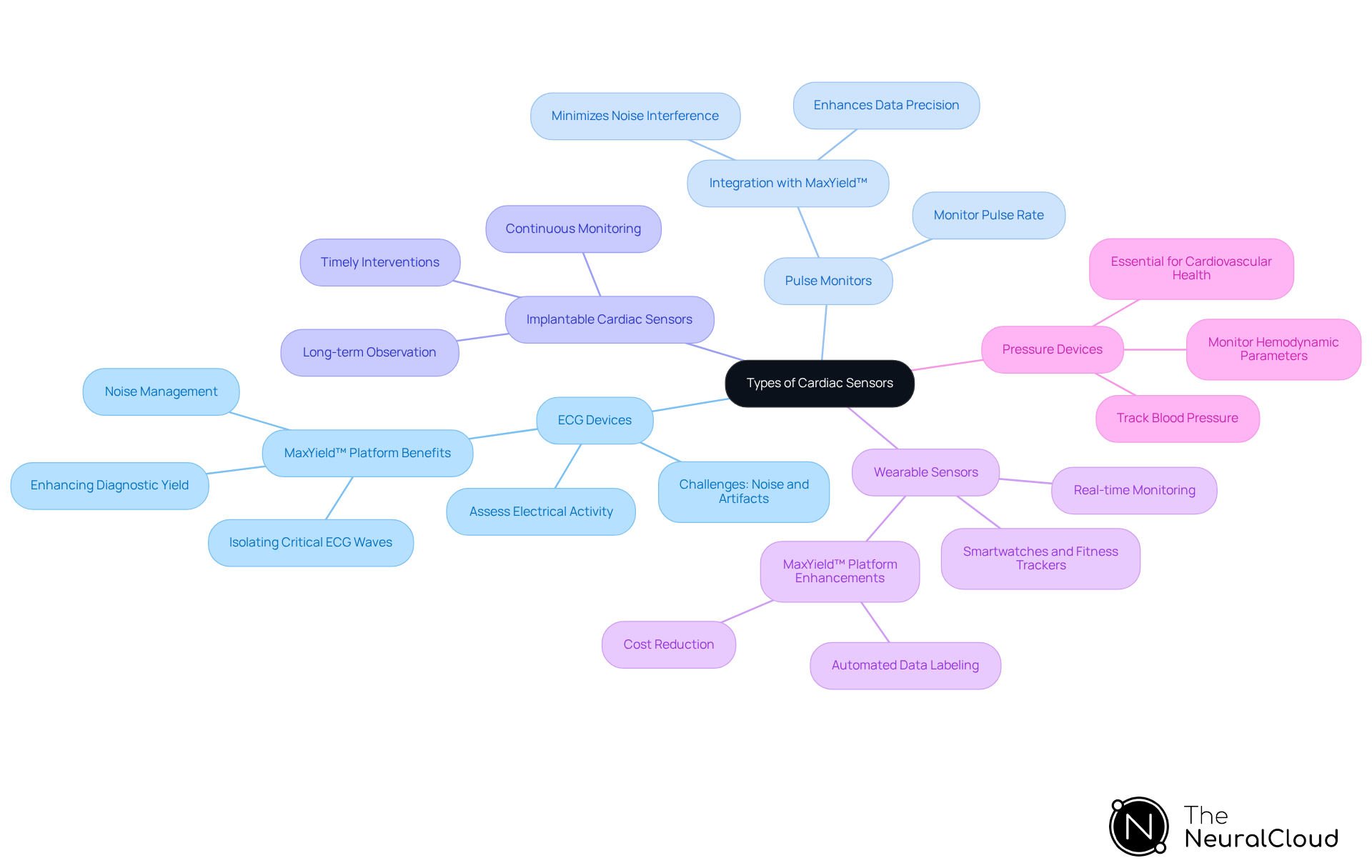
Examine Applications of Cardiac Sensors in Healthcare
The role of cardiac sensors is pivotal in modern healthcare, significantly enhancing patient care and outcomes. However, ECG analysis presents challenges that can impact the effectiveness of these devices. The MaxYield™ platform addresses these challenges by improving ECG analysis through advanced features that streamline data interpretation.
Features of MaxYield™:
- Noise Filtering: MaxYield™ employs sophisticated algorithms that enhance noise filtering capabilities, ensuring clearer signal interpretation.
- Automated Data Handling: The platform automates data management, allowing for quicker responses to patient needs.
- Real-Time Monitoring: It provides real-time insights into cardiac function, enabling proactive management of patients.
Advantages for Healthcare Professionals:
- Improved Accuracy: With sensitivity rates exceeding 99%, automated detection systems can classify arrhythmias effectively, reducing the risk of complications.
- Enhanced Patient Engagement: Wearable sensors facilitate remote monitoring, promoting self-management among patients with chronic conditions.
- Streamlined Postoperative Care: The clarity provided by MaxYield™ in transforming noisy ECG recordings into clean signals is vital for early identification of complications after heart surgery.
These features not only improve the accuracy of cardiac monitoring but also enhance the overall patient experience. By integrating MaxYield™ into their practices, healthcare professionals can expect better clinical outcomes, including decreased hospital readmissions and improved quality of life for patients. The adaptability of cardiac sensors, along with advanced monitoring technologies, is transforming heart health management and promoting a proactive approach to patient care.
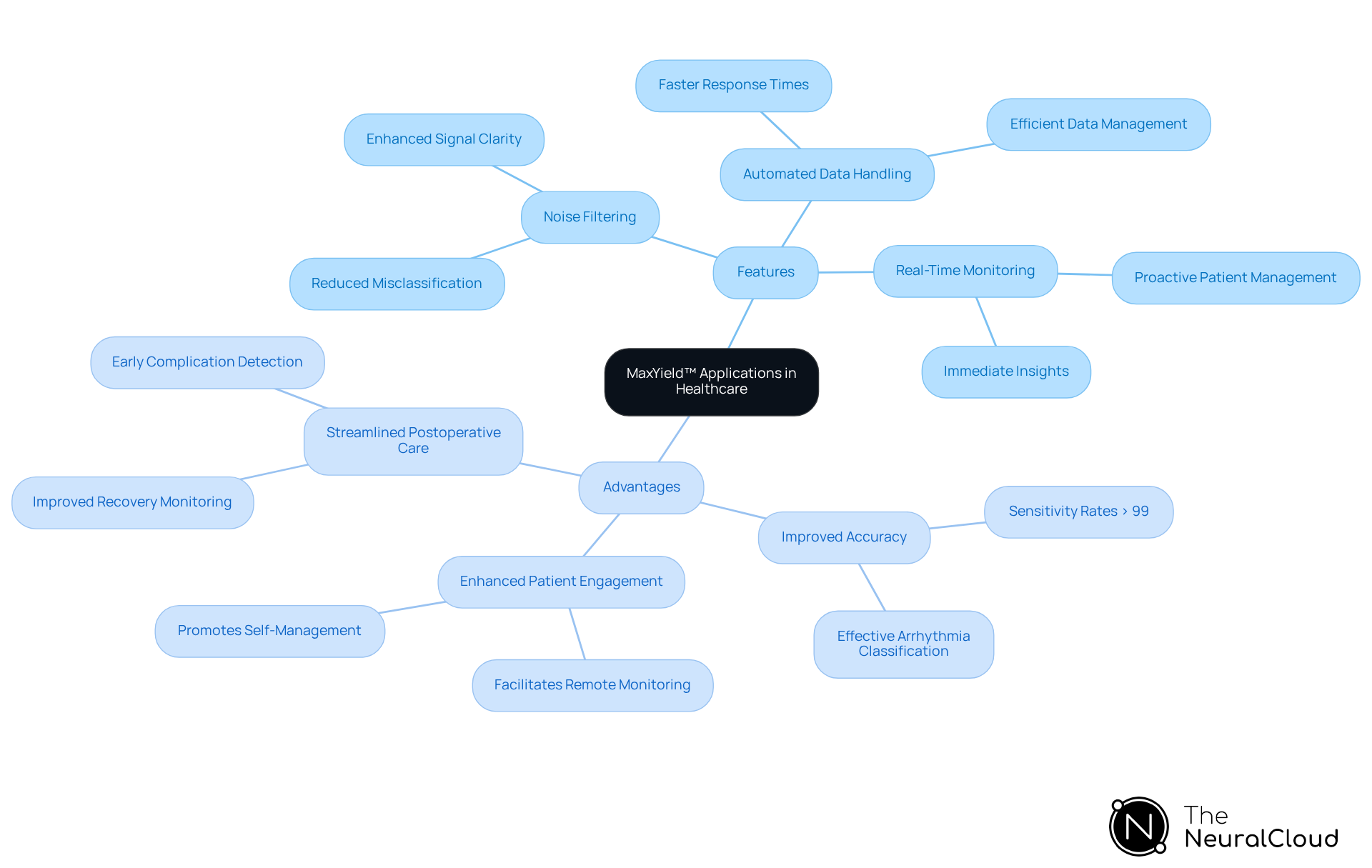
Integrate Cardiac Sensors into Healthcare Systems
Integrating cardiac sensors into healthcare systems involves several key steps:
- Assessing Needs: Evaluate the specific requirements of the medical facility and the patient group to determine which types of devices will be most advantageous.
- Selecting Compatible Technologies: Choose devices that are suitable for current medical IT systems, including Electronic Health Records (EHRs).
- Training Staff: Offer instruction for healthcare professionals on how to use and interpret data from cardiac devices effectively. Utilizing advanced AI-driven solutions like MaxYield™, healthcare providers can enhance clarity and diagnostic yield.
- Establishing Protocols: Create guidelines for data collection, analysis, and reaction to alerts produced by the devices. The automated features of MaxYield™ streamline workflows and enhance efficiency.
- Monitoring and Evaluation: Continuously monitor the performance of the integrated systems and assess their effect on health outcomes, making adjustments as necessary. The integration of Neural Cloud Solutions' advanced noise filtering and wave recognition capabilities significantly enhances the accuracy and efficiency of ECG analysis.
By following these steps and incorporating innovative technologies such as MaxYield™, healthcare providers can ensure that the integration of cardiac sensors into their practices is effective, thereby enhancing patient monitoring and care. For further guidance, refer to the user manual for detailed methodologies and best practices.
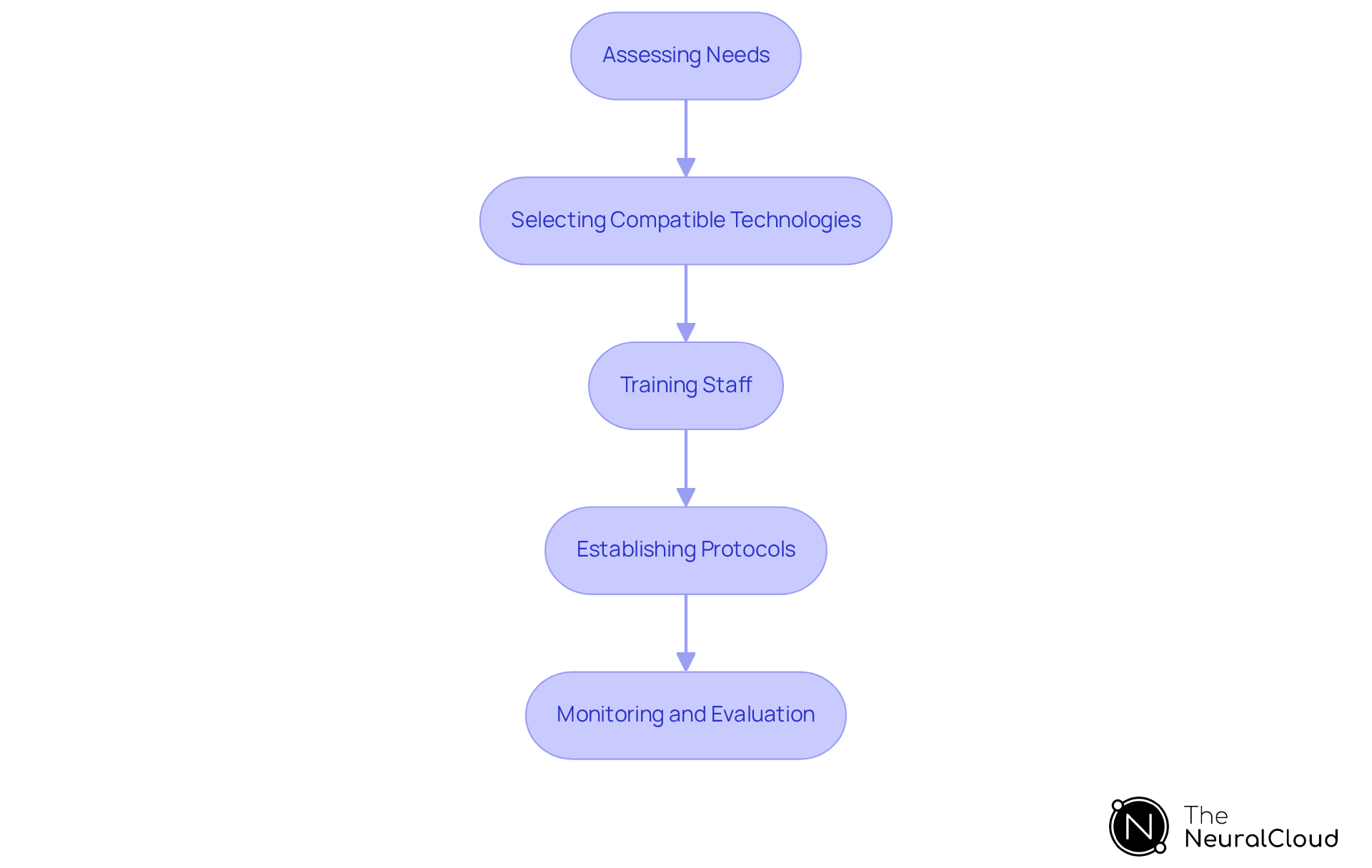
Conclusion
The exploration of cardiac sensors highlights their crucial role in enhancing heart health monitoring and improving patient outcomes. These devices, whether invasive or non-invasive, provide vital insights into cardiac activity, enabling healthcare professionals to make informed decisions. However, challenges such as noise in ECG analysis can hinder their effectiveness. This is where advanced technologies like the MaxYield™ platform come into play, streamlining data management and improving ECG analysis.
Key features of the MaxYield™ platform include:
- Noise Reduction: Enhances the clarity of ECG signals, allowing for more accurate readings.
- Data Management: Simplifies the handling of large datasets, making it easier for healthcare providers to access and analyze patient information.
- User-Friendly Interface: Designed for ease of use, ensuring that healthcare professionals can quickly adapt to the system.
The advantages of utilizing the MaxYield™ platform are significant. By addressing the challenges in ECG analysis, healthcare professionals can improve diagnostic accuracy and enhance patient safety. This not only fosters a culture of continuous monitoring but also supports proactive patient management. As the demand for accurate heartbeat monitors rises, the importance of these technologies in preventive healthcare becomes increasingly clear.
Moreover, the shift towards remote monitoring is gaining traction, as evidenced by the growing acceptance among patients and healthcare providers alike. This trend enhances patient engagement and significantly reduces hospital readmission rates. Ultimately, the integration of cardiac sensors into healthcare systems is not merely a technological upgrade; it represents a transformative shift towards proactive patient management. Embracing these innovations will be crucial in shaping a healthier future for patients.
Frequently Asked Questions
What are cardiac monitors used for?
Cardiac monitors are used to oversee and examine the heart's electrical activity, capturing vital data such as heart rate, rhythm, and other critical cardiac parameters.
What are the two main categories of cardiac devices?
The two main categories of cardiac devices are invasive and non-invasive devices. Non-invasive devices, like ECG electrodes, attach to the skin, while invasive instruments are implanted within the body for continuous monitoring.
Why are non-invasive cardiac devices important in healthcare?
Non-invasive cardiac devices enhance patient safety by minimizing the risks associated with invasive procedures.
How do advanced cardiac devices improve data accuracy?
Advanced cardiac devices improve data accuracy by integrating technologies such as photoplethysmography (PPG) and ECG, which enhance the detection of conditions like atrial fibrillation, thereby boosting the reliability of heart health monitoring.
What is MaxYield™ and how does it benefit ECG analysis?
MaxYield™ is a platform that transforms ECG analysis by offering automated, scalable, and device-agnostic solutions. It includes features like noise filtering and automated signal processing to capture clean ECG recordings from any 1-lead or 3-lead device.
What is the projected growth of the Heartbeat Monitor Market by 2030?
The Heartbeat Monitor Market is projected to reach $5.18 billion by 2030, growing at a compound annual growth rate of 21.37% from 2024 to 2030.
How are healthcare professionals utilizing cardiac sensors?
Healthcare professionals are increasingly utilizing cardiac sensors for real-time monitoring and early detection of cardiovascular issues, recognizing their transformative potential in clinical settings.
What impact does remote monitoring have on hospital readmission rates?
Remote monitoring has been shown to reduce hospital readmission rates by up to 76% and improve patient satisfaction scores.
What is the public sentiment towards remote monitoring in healthcare?
Nearly 50% of Americans support integrating remote monitoring into healthcare, with expectations that around 71 million Americans will utilize some form of remote monitoring service by 2025.
What percentage of consumers are willing to participate in remote health monitoring programs?
Between 65% to 70% of consumers are willing to participate in remote health monitoring programs, indicating a strong acceptance and demand for cardiac sensors.
